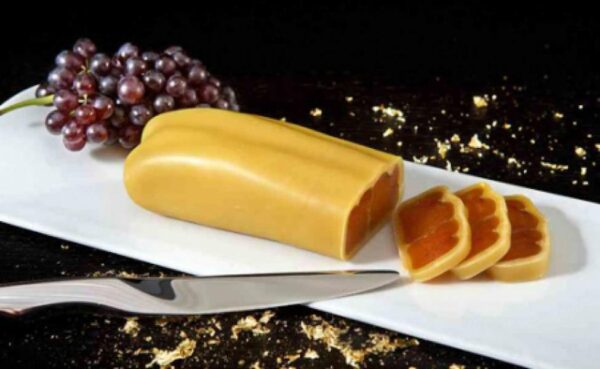Avgotaraho or Bottarga
Avgotaraho is Greece’s answer to caviar. It’s a product of high nutritional value, strong flavour, and a protracted aftertaste. The velvetier its texture, the richer it is nutritionally.
It is produced, preferably after mid-August, from the mullet eggs caught in the saltwater lagoons of Messolonghi-Aitoliko. It has a characteristically spicy flavour that is attributed to the flora and fauna of the lagoons. Once the fish is caught, the whole mature roe is removed and covered with natural sea salt until the moisture is absorbed. Then, it is dried in the sun and placed between wooden slabs, giving the avgotaraho its characteristic shape.
A critical difference between Greek avgotaraho and similar products is that the mullet roe is sealed in around eight layers of melted beeswax. The beeswax provides a natural shield against oxidation while allowing the delicacy of it to maintain its humidity. The beeswax also helps preserve the nutritional qualities of the roe’s ingredients.
Holding a significant place in the diet of ancient Greeks and during the Byzantine Empire, avgotaraho became part of Greece’s culinary tradition. Considered Greece’s caviar, Lord Byron spread Messolonghi Bottarga (Latinised version of the word avgotaraho) throughout Europe.
For the novice, avgotaraho appears quite unique, odorless and may look like a flat waxed sausage. But once the wax is removed, your taste buds will discover one of the most flavorful products of the sea. Try it plain as thin slices with dried figs or on melba toast with goat cheese spread.
Source: My Little Greek Foodbook




